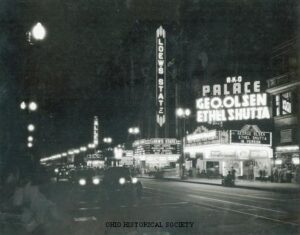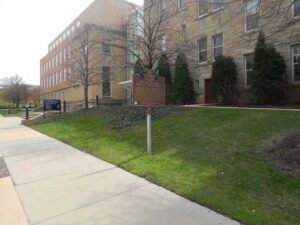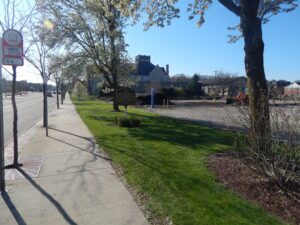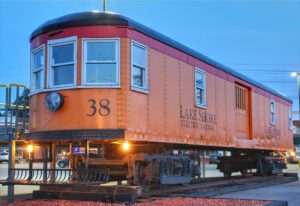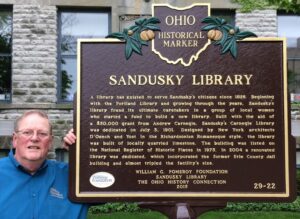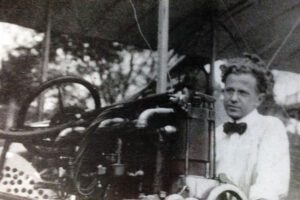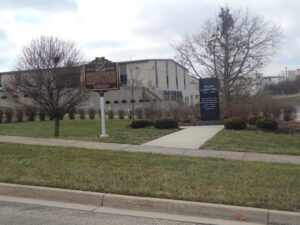, OH
The Theater District, bound by Chester Avenue, Prospect Avenue, East 18th, East 9th and East 12th Streets, came into being at the turn of the 20th century, when Cleveland emerged as a thriving metropolis. Built between 1890-1928, the area hosted a variety of fine retail stores, theaters, prestigious clubs, restaurants, and distinct office buildings. The rise of television and flight to the suburbs sent downtown entertainment into a death spiral, until a 1970 grass roots effort saved from demolition the surviving post-World War I theaters (the State, Ohio, Hanna, Allen, and Palace), making it the “world’s largest theater restoration project.” It became a catalyst for reinvestment in downtown properties, restoring civic pride and giving testimonial to the creative vision of the city’s civic leaders and citizenry. By the year 2000, Cleveland’s Theater District boasted the nation’s 2nd largest performing arts center.
, OH
Ohio’s oldest surviving municipal market house, Findlay Market was designed under the direction of City Civil Engineer Alfred West Gilbert (1816-1900). It was listed on the National Register of Historic Places in 1972. The structure was among the first market houses in the United States to use iron frame construction technology. Originally an open pavilion, much of the market was erected in 1852, but disputes with contractors delayed its opening until 1855. The center masonry tower was built in 1902. Soon after, public health concerns prompted enclosure of the market stalls and the addition of plumbing and refrigeration. Until then, vendors found cool storage in deep cellars beneath nearby breweries. The tower bell was brought from Cincinnati’s Pearl Street Market in 1934. Findlay Market was renovated in 1973-74 and again in 2002-03.
, OH
The Michelson-Morley Experiment, conducted at Western Reserve University in July 1887, provides the earliest direct evidence that would later support Albert Einstein’s theory of relativity. Albert A. Michelson, professor of physics at the Case School of Applied Sciences, and Edward Morley, professor of chemistry at Western Reserve University, tested the prevailing scientific theory that light waves travel faster downwind and slower against an upwind as they travel through a substance once thought to permeate space called aether. Finding no differences in the velocity of light waves traveling in different directions with respect to Earth’s motion around the sun, the experiment’s results baffled a generation of scientists until Einstein solved the riddle by formulating a new understanding of time and space. In 1907, Michelson, then head of the physics department at the University of Chicago, became the first American scientist to earn the Nobel Prize; he did so in physics.
, OH
On May 1, 1950, the Akron Community Service Center and Urban League building opened to the public. The Center was a gathering place for African Americans of the community, where they addressed workplace, education, and other issues dividing the city. Directors included the late George W. Thompson, Raymond Brown, and Vernon L. Odom. The Center provided space for meetings, classes and receptions and had a swimming pool and gymnasium. The Center also hosted talent shows, which included the musicians who became Ruby and the Romantics. The group scored a #1 hit in 1963 with “Our Day Will Come.”
, OH
From the 1890s to the 1930s, interurban railways were an important form of travel in the Midwest. Beach Park Station had an interurban carhouse, where repairs were performed and passengers boarded. The Lorain & Cleveland Railway (L&C) built the 65½ by 200 foot brick station in 1897. By 1901, the L&C became part of the Lake Shore Electric Railway (LSE) and Beach Park became stop 65 on a line that ran from Cleveland to Toledo and then to Detroit. Requiring power and water, the LSE built an electric plant and water tower at Avon Lake. This infrastructure spurred the community’s development and growth. (Continued on other side
, OH
A library has existed to serve Sandusky’s citizens since 1826. Beginning with the Portland Library and growing through the years, Sandusky’s library found its ultimate caretakers in a group of local women who started a fund to build a new library. Built with the aid of a $50,000 grant from Andrew Carnegie, Sandusky’s Carnegie Library was dedicated on July 3, 1901. Designed by New York architects D’Oench and Yost in the Richardsonian Romanesque style, the library was built of locally quarried limestone. The building was listed on the National Register of Historic Places in 1975. In 2004 a renovated library was dedicated, which incorporated the former Erie County Jail building and almost tripled the facility’s size.
, OH
Ernest “Ernie” C. Hall, a pioneer of early flight who is widely recognized for his long career in aviation, was born near Warren, Ohio in 1890. A friend of the Wright brothers, Hall built his first powered airplane in 1909 and flew in 1911. He began his career as a civilian flight instructor in 1913, opening a flying school in Pennsylvania in 1915. During World War I, he transferred to Call Field in Wichita Falls, Texas, where he trained over 500 military pilots for combat. In 1922, Hall relocated his flight school to Warren, Ohio, where he taught until his death in 1972. His 1911 monoplanes have been displayed at the Smithsonian’s National Air & Space Museum in Washington D.C. and the National Museum of U.S. Air Force in Dayton, Ohio.
, OH
The facilities once here propelled the United States through the Nuclear and Space Ages and were named for the nearby pre-historic Miamisburg Mound. The Manhattan Engineer District of the War Department began construction of Mound Laboratory in 1946. The facility consolidated production of the nuclear-reaction initiators, developed for the United States’ first atomic bombs during World War II. Previously (1943-1946), the work to separate, purify, and process the element polonium used in these initiators occurred at facilities throughout the Dayton area. Mound Laboratory was the nation’s first permanent post-WWII Atomic Energy Commission site. Mound Laboratory had 116 buildings and at its peak employed approximately 2,500 scientists, engineers, and skilled workers. Contractors operating at the site were Monsanto (1947-1988), Edgerton, Germeshausen, and Grier (1988-1997), and Babcock and Wilcox (1997-2002). (Continued on other side)


